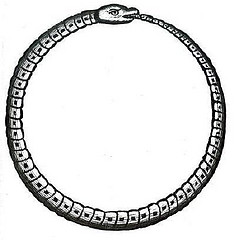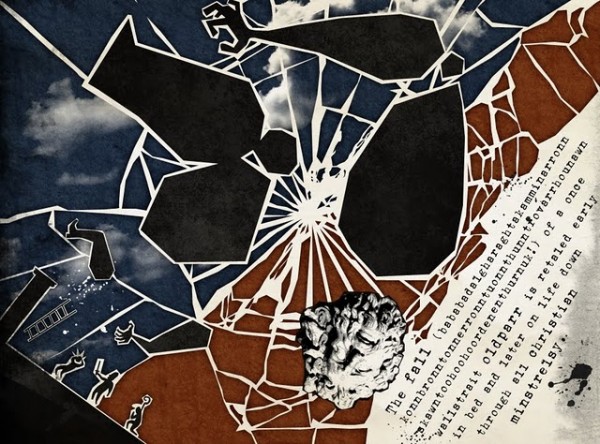The two best things I read online today are this essay on mushrooms by Daniel Nester and this paper from Hypermedia Joyce Studies that examines the connections between Finnegan’s Wake and Electronic Voice Phenomena.
Power Quote: Finnegans Wake
@twinnegganswake uses an iPhone spell check to autocorrect the text of Finnegans Wake, i.e. “my blue ribbon Cat, Perceval, just broke the Guinness record for eating the greatest number of hot dogs,four wieners and buns in 12 minutes!” [Via Christian Bok]
Mess Section (umm)
Strangely enough, Mr. Joyce has almost universally been denied the right to do on a larger scale what any Yankee foreman employing foreign laborers does habitually on a smaller scale, namely, to work out a more elastic and a richer vocabulary which will serve purposes unserved by schoolroom English… Those who cannot transcend Aristotle need make no attempt to read this fascinating epic. The ideas do not march single file, nor at a uniform speed.
‘Thirty years’ editorial labours produce ‘more comprehensible’ Finnegans Wake’
a) What the hell.
b) Doing it wrong.
A tail of two books, are there others?
 aims to celebrate and mimic the cyclical continuum of both Finnegan’s Wake, its first line being riverrun, past Eve and Adams, from swerve of shore to bend of bay and last line A way a lone a last a loved along the (duh — “along the riverrun,” pay attention) and the first and last lines of Pale Fire, Nabokov’s novel named after a “fictional” poem by John Shade: (first) I was the shadow of the waxwing slain/ By the false azure in the windowpane and (last) Some neighbor’s gardener, I guess — goes by/ Trundling an empty barrow up the lane wherein the lines are composed to predetermine the first in a never ending fateful loop like this post
aims to celebrate and mimic the cyclical continuum of both Finnegan’s Wake, its first line being riverrun, past Eve and Adams, from swerve of shore to bend of bay and last line A way a lone a last a loved along the (duh — “along the riverrun,” pay attention) and the first and last lines of Pale Fire, Nabokov’s novel named after a “fictional” poem by John Shade: (first) I was the shadow of the waxwing slain/ By the false azure in the windowpane and (last) Some neighbor’s gardener, I guess — goes by/ Trundling an empty barrow up the lane wherein the lines are composed to predetermine the first in a never ending fateful loop like this post
what is the relationship between your work and theory?
So yesterday I was doing some research to find out if anything has been written on the intersection of Deleuzian studies & Finnegans Wake. (Turns out, not much!) Anyway, I came across this public dialog between Jean-Michel Rabaté and Gregg Lambert called “The Future of Theory?” from 2002, occasioned by the publication of Rabaté’s book The Future of Theory.
Among other things, it got me thinking about the relationship between theory and creative writing. Do contemporary creative writers read theory, think about theory, use theory in their creative work? If so, how?

As an added bonus, here’s the intro to their conversation:
Lambert: To begin with I want to recall a line from Difference and Repetition, which forecasts a style of philosophy for the future, regarding what Deleuze describes as “a bearded Mona Lisa and a clean shaven Marx.” This line returned to me, Jean-Michel, as I read your account in The Future of Theory, particularly regarding your description of what you call “an hysterical Hegel.” Now, I always thought Marx was the hysterical one in relationship with Hegel, but here you seem to be saying something different. In the book there is a very dominant thesis that that Theory constantly risks becoming a little bit hysterical, or that its discourse itself is, in some way, hystericizing. Can you talk a bit about your use of the term “hysterical” with regard to the discourse of theory?
You can listen to the whole conversation here.


